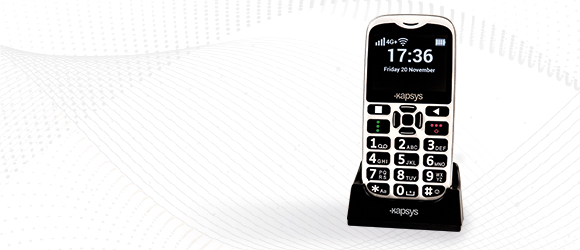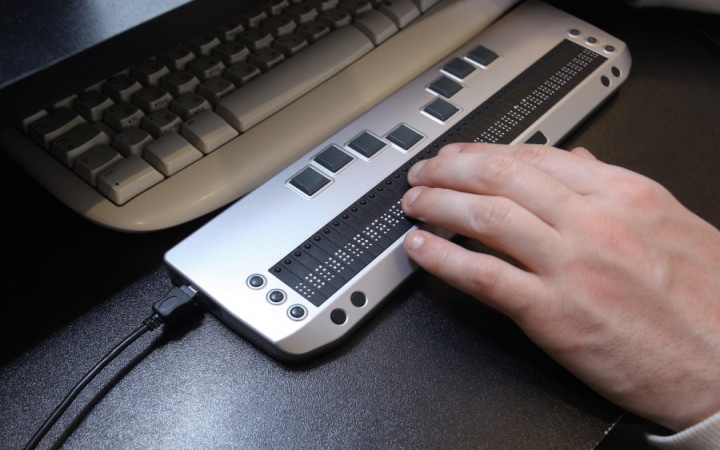OCR Devices for the Blind: Turning Print to Speech in Real-Time
Enhancing Lives With Advanced Assistive Gadgets for the Blind
The integration of advanced assistive devices for the blind is changing just how individuals experience their surroundings and engage with their areas. Technologies such as increased reality clever glasses and innovative digital travel aids not only facilitate navigation however likewise improve general lifestyle. These innovations promote a feeling of autonomy and self-efficacy among customers, enabling them to take on day-to-day jobs with newly found self-confidence. Nevertheless, the effects of these improvements prolong beyond simple functionality; they challenge societal perceptions of impairment and independence. What does this development imply for the future of assistive technology and its function in empowering individuals?
Review of Assistive Gadgets
Assistive tools for the blind encompass a varied range of modern technologies and tools designed to improve freedom and boost the lifestyle for individuals with aesthetic impairments. These devices accommodate different needs, from navigation and wheelchair to communication and daily job management.
Among the main categories of assistive tools consists of mobility aids, such as white walking canes and overview pet dogs, which aid users browse their surroundings securely. Digital travel aids, geared up with sensing units and audio feedback, likewise play a substantial function in wheelchair enhancement.
Additionally, devices that aid with daily living tasks, such as flexible kitchen area tools, Braille tags, and speaking watches, empower individuals to perform jobs individually. Communication aids, consisting of display readers and Braille screens, help with access to info and allow people to involve effectively with the electronic world.
Furthermore, low-tech services like magnifying glasses and large-print materials continue to be important for several users. Jointly, these assistive devices offer not only as practical devices yet likewise as important enablers of freedom, cultivating better participation in a globe that usually prioritizes sighted experiences. Their assimilation right into day-to-day live is crucial for advertising inclusivity and improving overall health for those with aesthetic disabilities.
Innovative Technologies in Use
Innovation in modern technology has dramatically changed the landscape of devices offered for people with visual disabilities. Among the most noteworthy improvements are smart glasses incorporated with augmented reality, which offer real-time navigating assistance and things recognition. These tools take advantage of progressed video cameras and man-made intelligence to deliver auditory cues, boosting the customer's spatial recognition and freedom.
Additionally, mobile applications have become effective sources, making it possible for users to recognize currency, read text aloud, and browse unknown environments with verbal guidelines. Devices such as Braille display screens and refreshable Braille tools remain to evolve, supplying smooth connection with computers and smart devices, consequently enhancing communication and access to details.
Wearable innovation, consisting of smartwatches outfitted with voice-activated functions, better empowers users by assisting in fast accessibility to notices and notifies without needing visual involvement. Responsive maps and 3D printing are also obtaining grip, using tangible representations of areas that help in orientation and wheelchair training.
Collectively, these ingenious technologies not only improve the lives of visually impaired individuals yet additionally foster better independence, inclusivity, and involvement with the wider community, consequently improving perceptions of accessibility. (OCR devices for the blind)
Individual Stories of Empowerment
Empowerment commonly emerges from individual experiences that highlight the transformative impact of technology on people with aesthetic disabilities. Take, as an example, the story of Sarah, a young musician who regained her enthusiasm for painting with the use of a wise walking stick equipped with challenge discovery. This device not only facilitated her flexibility however instilled a newly found self-confidence, enabling her to navigate public spaces individually and seek her creative undertakings.

These stories highlight the extensive effects that progressed the original source assistive devices can have on every day life. By enabling people to overcome barriers, modern technology fosters a sense of freedom and self-respect. Such empowerment stories work as a testimony to the possibility of advancement, showing exactly how the right tools can considerably enhance top quality of life and open doors to brand-new opportunities for those with aesthetic problems.
Benefits of Advanced Solutions
The combination of innovative innovation into assistive devices substantially changes day-to-day experiences for those affected by vision loss. Braille displays and notetakers. Instruments such as clever canes geared up with sensors, navigation apps, and wearable innovation are created to provide real-time feedback, improving spatial awareness and lowering the dangers connected with mobility.
Moreover, advanced assistive technologies cultivate social addition by assisting in interaction and communication. Voice-activated gadgets and apps permit individuals to access info and involve with their environments separately, damaging barriers that previously prevented their engagement in academic, specialist, and social settings.
In addition, the customization and versatility of these solutions satisfy the varied requirements of customers, thus enhancing their general top quality of life. Improved capability, such as things acknowledgment and text-to-speech capabilities, empowers people with aesthetic problems to perform jobs that they might have as soon as found challenging. Ultimately, advanced assistive modern technologies not only enhance self-reliance and safety and security but also promote self-respect and self-worth, allowing customers to lead meeting lives.
Future Fads in Assistive Technology
As modern technology continues to develop, the landscape of assistive gadgets for the blind is positioned for impressive innovations that will additionally boost accessibility and independence. Emerging patterns in assistive technology indicate a shift towards enhanced integration of expert system (AI) and equipment understanding, making it possible for devices to adjust to private user requires in real-time. These technologies are expected to help with more user-friendly navigation systems that can determine barriers and supply audio comments, dramatically improving exterior flexibility.
In addition, the development of wearable technology, such as clever glasses furnished with increased reality, will allow customers to receive contextual information concerning their environments, thus enhancing their spatial understanding. In addition, developments in click this site haptic technology assurance to produce tactile click site comments gadgets, enabling users to regard information through touch, boosting understanding and interaction with their atmosphere.
Telecommunication developments are additionally leading the method for remote aid options, where experienced professionals can give guidance through video clip phone calls, guaranteeing support is readily accessible. As these patterns unravel, the future of assistive tools for the blind will undoubtedly foster better freedom, empowering individuals to navigate their world with confidence and convenience.

Final Thought
The integration of sophisticated assistive tools for the blind represents a significant innovation in promoting self-reliance and enhancing lifestyle. By using ingenious technologies, these tools equip users to browse their settings with higher confidence and freedom. As the area remains to advance, recurring study and growth will likely generate much more advanced options, better transforming the lived experiences of people with aesthetic impairments and promoting a higher feeling of inclusion within society.
The integration of advanced assistive devices for the blind is transforming just how people experience their surroundings and interact with their areas. The combination of advanced technology into assistive devices dramatically changes daily experiences for those impacted by vision loss.As modern technology continues to progress, the landscape of assistive gadgets for the blind is positioned for exceptional developments that will certainly further improve accessibility and self-reliance. Arising fads in assistive modern technology suggest a shift toward enhanced combination of synthetic intelligence (AI) and device understanding, enabling tools to adapt to private customer needs in real-time.The combination of innovative assistive tools for the blind stands for a significant advancement in promoting independence and boosting quality of life.